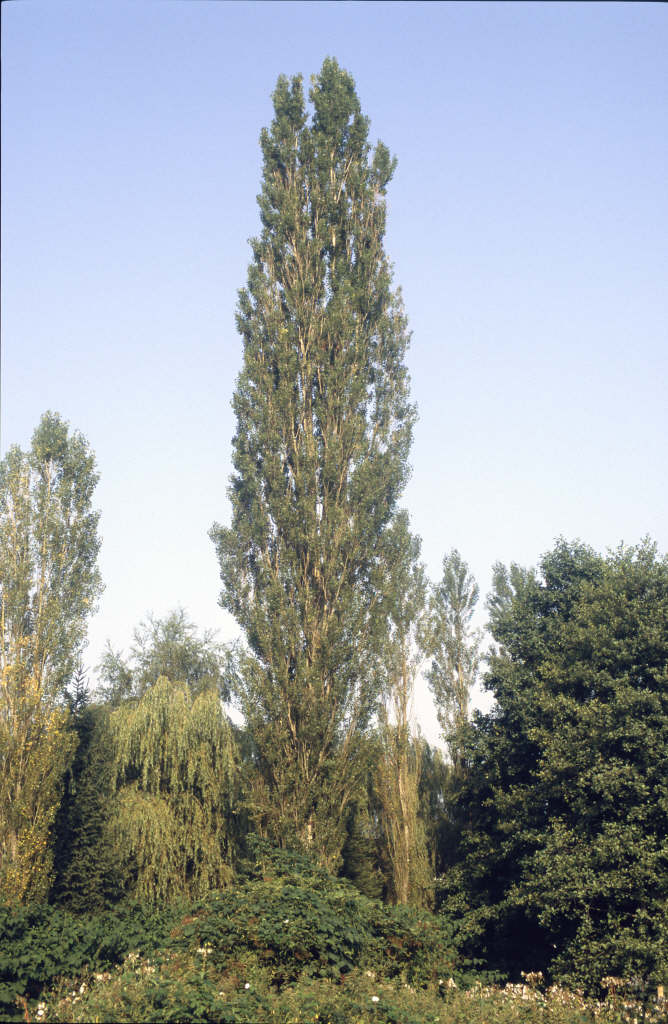Populus nigra 'Italica' (m)
Lombardy poplar
A large, vigorous, narrowly columnar deciduous tree to 30m tall, with bright green ovate leaves and crimson male catkins before the leaves open in early spring

Buy this plant
Size
Ultimate height
Higher than 12 metresTime to ultimate height
20–50 yearsUltimate spread
4–8 metresGrowing conditions
Moisture
Moist but well–drained, Poorly–drainedpH
Acid, Alkaline, NeutralColour & scent
| Stem | Flower | Foliage | Fruit | |
| Spring | Red | Green | ||
|---|---|---|---|---|
| Summer | Green | |||
| Autumn | Green | |||
| Winter |
Position
- Full sun
Aspect
West–facing or South–facing
Exposure
Exposed or Sheltered Hardiness
H7Botanical details
- Family
- Salicaceae
- Native to GB / Ireland
- No
- Foliage
- Deciduous
- Habit
- Columnar upright
- Genus
Populus are deciduous trees, mostly very fast-growing and large, with male and female catkins on separate trees, opening before the leaves. Male catkins are the more ornamental, female ones can be a nuisance from the cottony, wind-blown seeds
- Name status
Accepted
How to grow
Cultivation
Grow in moist but well-drained, humus-rich, fertile soils but avoid planting in vicinity of buildings due to vigorous root system; it has the potential to become a nuisance. Very useful as a screen or as part of a shelter belt and grows very rapidly
Propagation
Propagate from hardwood cuttings in winter or suckers in autumn or late winter
Suggested planting locations and garden types
- Architectural
- Coastal
- Cottage and informal garden
- Hedging and screens
Pruning
Pruning group 1; sucker removal in autumn or winter
Pests
May be susceptible to leaf beetles, sawflies and caterpillars
Diseases
May be susceptible to leaf spots, poplar bacterial canker, tree rusts and honey fungus
Get involved
The Royal Horticultural Society is the UK’s leading gardening charity. We aim to enrich everyone’s life through plants, and make the UK a greener and more beautiful place.